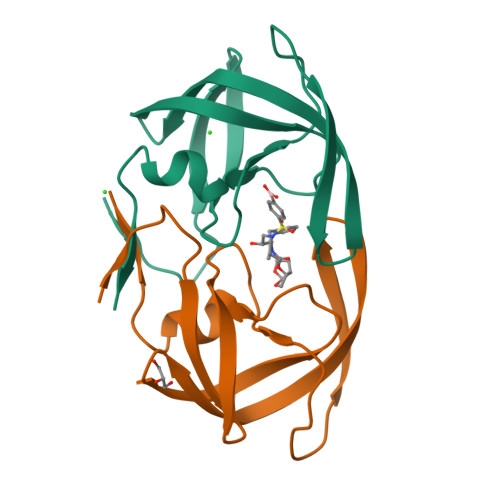Sub-picomolar Inhibition of HIV-1 Protease with a Boronic Acid.
Windsor, I.W., Palte, M.J., Lukesh 3rd., J.C., Gold, B., Forest, K.T., Raines, R.T.(2018) J Am Chem Soc 140: 14015-14018
- PubMed: 30346745
- DOI: https://doi.org/10.1021/jacs.8b07366
- Primary Citation of Related Structures:
6C8X, 6C8Y - PubMed Abstract:
Boronic acids have been typecast as moieties for covalent complexation and are employed only rarely as agents for non-covalent recognition. By exploiting the profuse ability of a boronic acid group to form hydrogen bonds, we have developed an inhibitor of HIV-1 protease with extraordinary affinity. Specifically, we find that replacing an aniline moiety in darunavir with a phenylboronic acid leads to 20-fold greater affinity for the protease. X-ray crystallography demonstrates that the boronic acid group participates in three hydrogen bonds, more than the amino group of darunavir or any other analog. Importantly, the boronic acid maintains its hydrogen bonds and its affinity for the drug-resistant D30N variant of HIV-1 protease. The BOH···OC hydrogen bonds between the boronic acid hydroxy group and Asp30 (or Asn30) of the protease are short ( r O···O = 2.2 Å), and density functional theory analysis reveals a high degree of covalency. These data highlight the utility of boronic acids as versatile functional groups in the design of small-molecule ligands.
Organizational Affiliation:
Department of Chemistry , Massachusetts Institute of Technology , Cambridge , Massachusetts 02139 , United States.





















